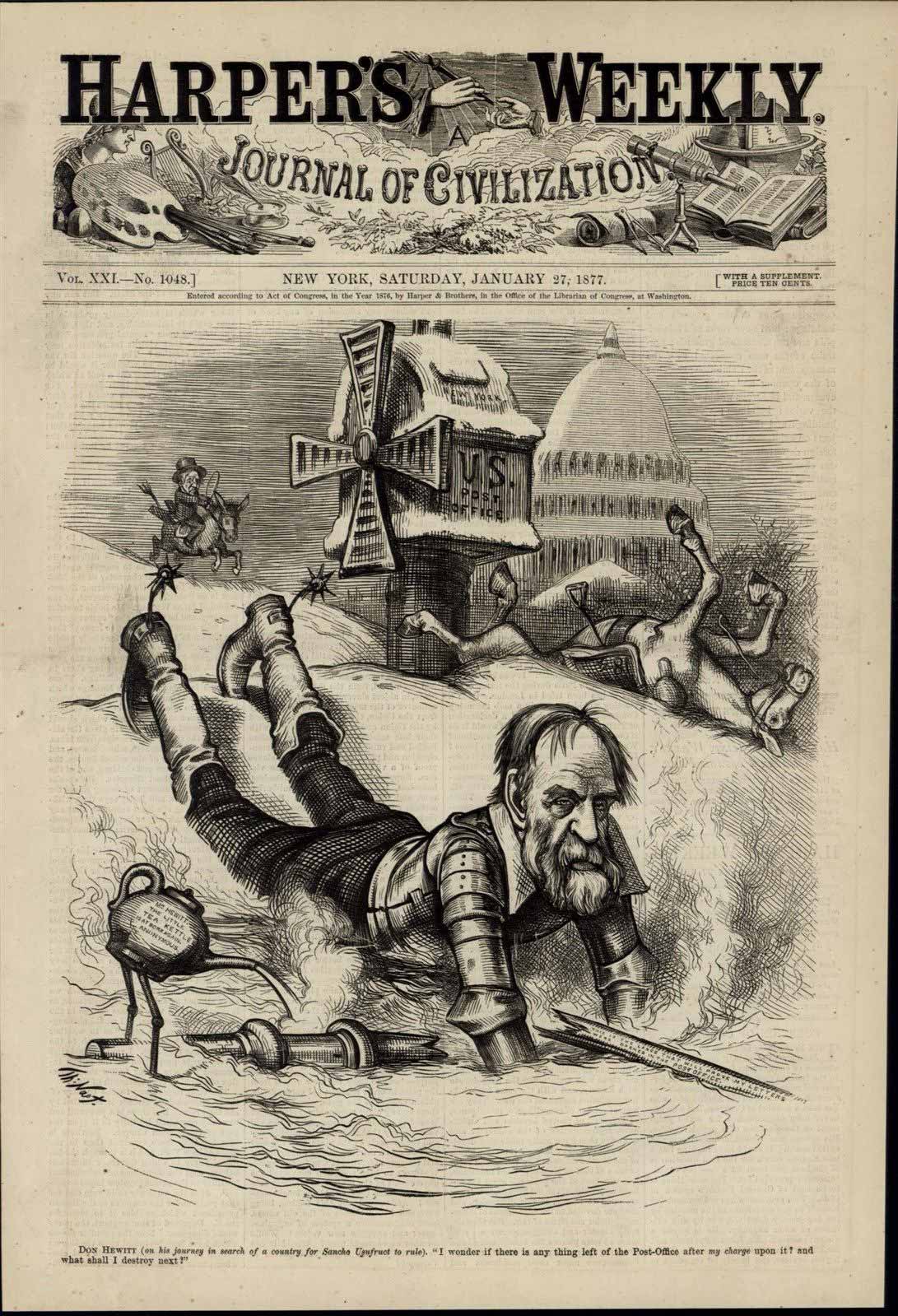Politics 140 Years Ago
Text at the bottom of the page reads, “Don Hewitt (on his journey in search of a country for Sancho Usufruct* to rule). ‘I wonder if there is anything left of the Post-Office after my charge upon it? and what shall I destroy next?'”
In this cartoon Abram Hewitt is depicted as Don Quixote and Samuel Tilden as his sidekick, Sancho Panza (riding the Democratic donkey).
The story of Don Quixote is played out with Hewitt’s failed assault on the infamous windmill, which Thomas Nast has illustrated as the “U.S. Post Office.”
During the 1876 election, Hewitt managed Tilden’s presidential campaign. Hoping to sway Republican voters, personalized letters were mailed out. After losing the election, Hewitt used his congressional power to attack the Post Office, claiming his letters had been tampered with and information about the Democratic Committee had been leaked. Outraged, the Postmaster General offered full support in investigating the matter, but Hewitt refused to give details or even speak with investigators. It later turned out a member of the Democratic Committee had been the one behind the leaks.
Hewitt’s lance reads, “This is the lance that will prove my letters were opened in the Post Office.”
Riding into the scene in the background is Tilden as the loyal sidekick, Sancho Panza. Tilden, the Democratic nominee and a former corporation lawyer, had used the legal term *“usufruct” in his letter of acceptance. Harper’s seized the opportunity to ridicule him with his own legalistic jargon. The teapot in the cartoon implies that the situation is a “tempest in a teapot”—a small matter that has been magnified. It was common to use a teapot, when tied to a figure’s leg, to symbolize a problem that would eventually trip up its wearer, something that has already happened here.
On January 23, three days after this postdated cartoon was published, Congressman Samuel S. Cox of New York, a Democrat, reported to the U.S. House that an investigation into the matter had exonerated the Post Office, and concluded that Hewitt’s letters had not been tampered with.

